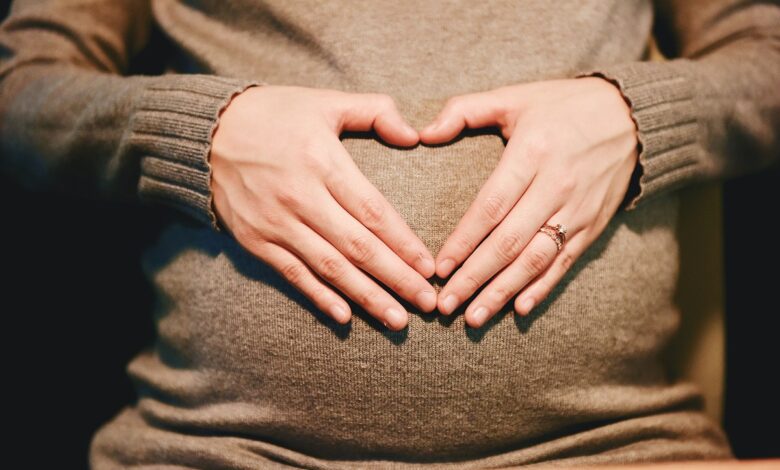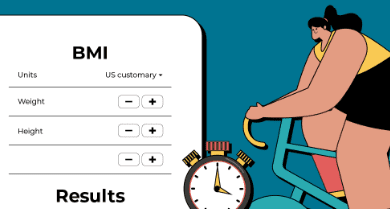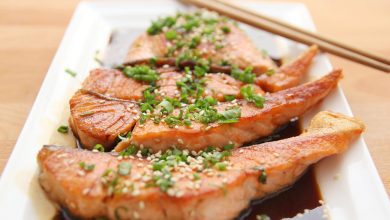Shedding Pounds with the Keto Diet: A Comprehensive Guide to Effective Weight Loss

The Keto Diet, short for the ketogenic diet, is a low-carb, high-fat diet that has gained popularity in recent years for effective weight loss. The main principle behind the Keto Diet is to switch the body’s primary source of fuel from carbohydrates to fats. By drastically reducing carbohydrate intake and increasing fat consumption, the body enters a state of ketosis, where it burns fat for energy instead of glucose.
One of the main benefits of the Keto Diet for weight loss is its ability to promote fat burning. When the body is in ketosis, it becomes more efficient at using stored fat as fuel. This can lead to significant weight loss, especially in individuals who have excess body fat. Additionally, the Keto Diet has been shown to reduce appetite and cravings, making it easier to stick to a calorie deficit and lose weight.
Effective Weight Loss Key Takeaways
- The Keto Diet can be an effective way for effective weight loss and improve overall health.
- The diet works by putting the body into a state of ketosis, where it burns fat for energy instead of carbohydrates.
- To start with the Keto Diet, limiting carbohydrate intake and increasing healthy fat consumption is important.
- Meats, fish, eggs, nuts, and low-carb vegetables are essential foods to include in a Keto diet for weight loss.
- Meal planning and preparation are key to success on the Keto Diet, and it’s important to avoid common mistakes like not getting enough electrolytes or protein.
Understanding the Science Behind the Keto Diet and Effective Weight Loss
To understand how the Keto Diet works for effective weight loss, it’s important to understand the role of ketones in the body. Ketones are produced when the body breaks down fat for energy in the absence of glucose. When carbohydrate intake is limited, the body’s glycogen stores become depleted, and it starts using stored fat as its primary source of fuel.
When the body is in ketosis, it produces ketones from fatty acids in the liver. The brain and other organs then use these ketones as an alternative source of energy. By relying on fat for fuel instead of glucose, the body can burn stored fat more efficiently, leading to weight loss.
How to Get Started with the Keto Diet for Weight Loss
Before starting the Keto Diet, taking a few steps is important to ensure success. First, consult with a healthcare professional or registered dietitian to make sure that the Keto Diet is safe and appropriate for you. They can provide personalized guidance and help you determine the right macronutrient ratios for your specific needs.
Next, it’s important to gradually reduce carbohydrate intake and increase fat consumption. This will allow your body to adjust to using fat as its primary source of fuel. Start by cutting out processed carbohydrates like bread, pasta, and sugary snacks. Instead, focus on consuming whole, nutrient-dense foods that are low in carbohydrates and high in healthy fats.
Essential Foods to Include in a Keto Diet for Effective Weight Loss
| Food | Net Carbs (g) | Fat (g) | Protein (g) | Calories |
|---|---|---|---|---|
| Avocado | 2 | 21 | 2.5 | 233 |
| Salmon | 0 | 13 | 22 | 220 |
| Eggs | 1 | 5 | 6 | 78 |
| Spinach | 1 | 0 | 1 | 7 |
| Broccoli | 4 | 0 | 3 | 15 |
| Almonds | 2 | 14 | 6 | 164 |
When following the Keto Diet for weight loss, it’s important to include a variety of foods that are low in carbohydrates and high in healthy fats. Some essential foods to include in a Keto Diet include:
- Avocados: Avocados are an excellent source of healthy fats and fiber. They also contain important nutrients such as potassium and vitamin K.
- Eggs: Eggs are a staple on the Keto Diet because they are low in carbohydrates and high in protein and healthy fats. They are also a good source of vitamins and minerals.
- Olive oil: Olive oil is a healthy fat that is rich in monounsaturated fats and antioxidants. It can be used for cooking or as a dressing for salads.
- Nuts and seeds: Nuts and seeds are high in healthy fats, fiber, and protein. They make a great snack option on the Keto Diet.
- Fatty fish: Fatty fish such as salmon, mackerel, and sardines are rich in omega-3 fatty acids, which have been shown to have numerous health benefits.
- Coconut oil is a great source of medium-chain triglycerides (MCTs), which the body easily converts into ketones.
Tips and Tricks for Meal Planning and Preparation on the Keto Diet
Meal planning and preparation are key to success on the Keto Diet. By planning and preparing your meals in advance, you can ensure that you have healthy, keto-friendly options available at all times. Here are some tips to make meal planning and preparation easier:
- Plan your meals for the week: Take some time each week to plan out your meals and snacks. This will help you stay on track and avoid making impulsive food choices.
- Prep ingredients in advance: Chop vegetables, cook proteins, and portion out snacks ahead of time. This will save you time during the week and make sticking to your keto diet easier.
- Cook in bulk: Prepare large batches of keto-friendly meals and freeze them in individual portions. This way, you’ll always have a healthy meal ready to go when you’re short on time.
- Use meal delivery services: If you don’t have the time or energy to cook, consider using a keto-friendly meal delivery service. This can be a convenient way to stay on track with your diet.
Common Mistakes When Starting the Keto Diet for Effective Weight Loss

When starting the Keto Diet for weight loss, it’s important to avoid common mistakes that can hinder your progress. Here are some common mistakes to avoid:
- Not tracking your macronutrient intake: To ensure that you’re in ketosis and burning fat for fuel, it’s important to track your macronutrient intake. This means keeping track of your carbohydrate, protein, and fat intake.
- Not drinking enough water: Drinking enough water is important on any diet, but it’s especially important on the Keto Diet. When you’re in ketosis, your body excretes more water, so staying hydrated is important.
- Not getting enough electrolytes: When following the Keto Diet, it’s important to replenish electrolytes such as sodium, potassium, and magnesium. These minerals are essential for proper bodily function.
- Eating too many processed foods: While many keto-friendly processed foods are available, it is important to focus on whole, nutrient-dense foods. These foods will provide your body with the vitamins, minerals, and fiber it needs.
Incorporating Exercise into a Keto Diet for Optimal Weight Loss Results
While the Keto Diet can be effective for weight loss on its own, incorporating exercise into your routine can enhance your results. Exercise helps to increase calorie burn, build lean muscle mass, and improve overall health. Here are some types of exercise to incorporate into a Keto Diet for effective weight loss:
- Strength training: Strength training exercises such as weightlifting or bodyweight exercises can help build lean muscle mass. This can increase your metabolism and help you burn more calories throughout the day.
- Cardiovascular exercise: Cardiovascular exercises such as running, cycling, or swimming can help increase calorie burn and improve cardiovascular health.
- High-intensity interval training (HIIT): HIIT workouts involve short bursts of intense exercise followed by periods of rest. This type of workout can help increase calorie burn and improve cardiovascular fitness.
- Low-intensity activities: Incorporating low-intensity activities such as walking or yoga into your routine can help improve overall fitness and aid in recovery.
Tracking Progress and Staying Motivated on the Keto Diet for Weight Loss
Tracking your progress and staying motivated are important aspects of any weight loss journey, including the Keto Diet. Here are some tips for tracking progress and staying motivated:
- Take measurements: In addition to tracking your weight, measure your waist, hips, and other areas of your body. This can help you see changes in body composition even if the scale doesn’t move.
- Keep a food diary: Keeping a food diary can help you stay accountable and track your macronutrient intake. It can also help you identify any patterns or triggers that may be hindering your progress.
- Set realistic goals: Set achievable goals for yourself and celebrate your progress along the way. This can help keep you motivated and focused on your weight loss journey.
- Find a support system: Surround yourself with supportive friends, family members, or online communities who can provide encouragement and accountability.
Addressing Common Concerns and Questions About the Keto Diet for Weight Loss
As with any diet, there are common concerns and questions about the Keto Diet. Here are some common concerns and questions, along with answers:
- Is the Keto Diet safe? The Keto Diet is generally safe for most people but may not be suitable for everyone. It’s important to consult with a healthcare professional before starting the diet to ensure that it’s safe for you.
- Will I feel hungry on the Keto Diet? Initially, you may experience hunger or cravings as your body adjusts to using fat as its primary source of fuel. However, many people find that their appetite decreases overtime on the Keto Diet.
- Can I eat carbohydrates on the Keto Diet? The Keto Diet is a low-carb diet, so carbohydrate intake is limited. However, you can still include small amounts of carbohydrates from non-starchy vegetables and low-carb fruits.
- Will I lose muscle mass on the Keto Diet? Consuming enough protein to support muscle growth and maintenance is important when following the Keto Diet. This can help prevent muscle loss while promoting fat loss.
Success Stories and Real-Life Examples of Weight Loss with the Keto Diet
There are countless success stories of individuals who have lost weight on the Keto Diet. These success stories serve as inspiration and motivation for others who are considering trying the diet. Here are some tips and advice from these success stories:
- Be patient: Weight loss takes time, and it’s important to be patient with yourself and your body. Focus on making sustainable lifestyle changes rather than quick fixes.
- Find what works for you: The Keto Diet can be customized to fit your individual needs and preferences. Experiment with different foods and recipes to find what works best for you.
- Don’t be afraid to ask for help: If you’re struggling with the Keto Diet or have questions, don’t hesitate to ask for help. There are many resources available, including healthcare professionals, registered dietitians, and online communities.
- Stay consistent: Consistency is key to weight loss. Stick to your Keto Diet and exercise routine, even when they get challenging. Remember that every small step counts towards your overall progress.
In conclusion, the Keto Diet can be an effective weight loss tool when done correctly. By understanding the science behind the diet, incorporating essential foods, and staying consistent with meal planning and exercise, individuals can achieve their weight loss goals on the Keto Diet. It’s important to address common concerns and questions, track progress, and find motivation through success stories and real-life examples. With dedication and patience, the Keto Diet can lead to long-term effective weight loss success.
If you’re following a keto diet for weight loss and have been craving something sweet, you’ll be delighted to know that keto desserts are not only for those over 50!
In fact, there are plenty of delicious and healthy options available for all ages. One such option is keto chocolate mousse, which not only satisfies your sweet tooth but also works with a paleo lifestyle. To learn more about this delectable treat and how to make it, check out this article on WeightLossDiet4U.com: Keto Chocolate Mousse: Works with Paleo. Don’t miss out on enjoying guilt-free desserts while staying on track with your weight loss goals!
FAQs
What is a keto diet?
A keto diet is a low-carb, high-fat diet that aims to put your body into a state of ketosis, where it burns fat for energy instead of carbohydrates.
How does a keto diet help with weight loss?
A keto diet can help with weight loss by reducing your appetite, increasing your metabolism, and promoting fat burning. It also helps to stabilize blood sugar levels, which can reduce cravings and prevent overeating.
What foods are allowed on a keto diet?
Foods that are allowed on a keto diet include meat, fish, eggs, dairy, nuts, seeds, low-carb vegetables, and healthy fats such as olive oil and avocado.
What foods should be avoided on a keto diet?
Foods that should be avoided on a keto diet include grains, sugar, processed foods, high-carb fruits, and starchy vegetables such as potatoes and corn.
Is a keto diet safe?
A keto diet can be safe for most people, but it may not be suitable for everyone. It is important to consult with a healthcare professional before starting a keto diet, especially if you have any underlying health conditions.
What are the potential side effects of a keto diet?
Potential side effects of a keto diet include headaches, fatigue, constipation, and bad breath. These side effects are usually temporary and can be managed with proper hydration and nutrition.
How long does it take to see results on a keto diet?
Results on a keto diet can vary depending on the individual, but most people start to see results within a few weeks. It is important to stick to the diet and maintain a calorie deficit to achieve weight loss goals.




